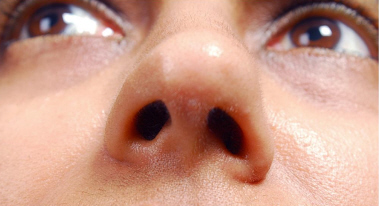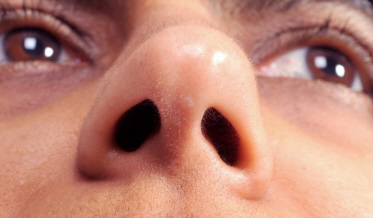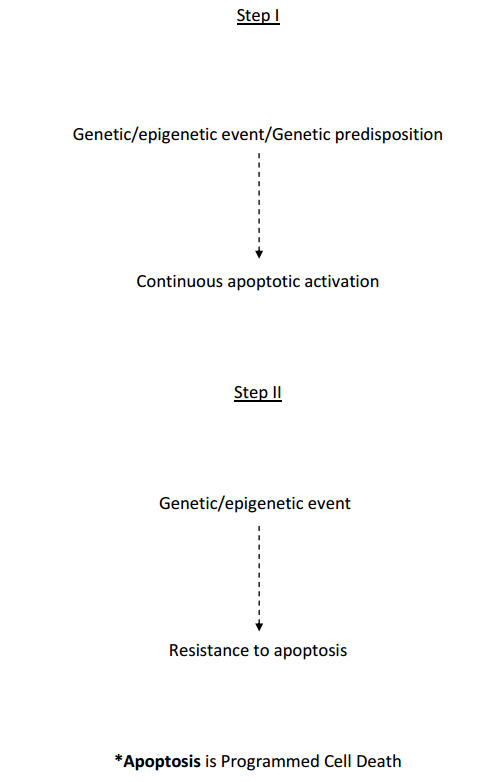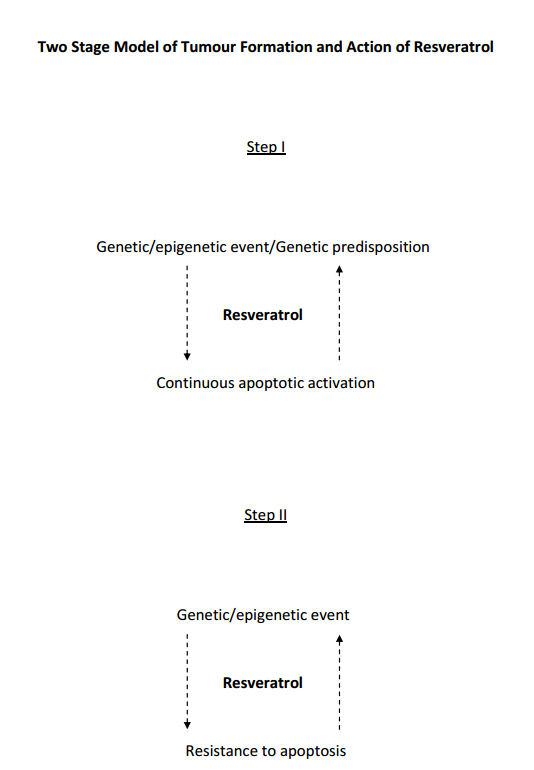In the first stage, repeated peelings {10-15} due to summer sun exposure spanning a period of approximately 3 months lead to a genetic or epigenetic event resulting in elevated apoptotic activation. This event was manifest as continuous and spontaneous peeling 3 months later during the winter without exposure to the initial carcinogenic stimulus (UV rays in this case) or with minimal exposure. It was accompanied by the appearance of a nasal lesion located on the underside of the nasal septum between the two nasal alae near the tip of the nose. Upon closer examination, this was actually seen to consist of two small oval, slightly erythematous lesions.
In the second stage, approximately 8 months following the first event, a genetic or epigenetic event occurred involving the appearance of an abnormal growth in the region which was resistant to apoptosis. This was manifest as the cessation of peeling in the region of the “tumor” even in response to the initial carcinogenic stimulus {UV rays} [Top Figure].

Resveratrol is a compound derived from grape skins which has been shown to display certain selective apoptotic properties inducing programmed cell death in cancer cells. Upon daily topical application of a resveratrol ointment {50 mg/ml} in an aloe vera base, considerable regression of the growth was observed within 10 days [Bottom Figure].

Moreover, with the diligent application of the zinc oxide sunscreen formulation previously reported in Science 2.0 [Two Sunscreens that May Prevent Peeling: A Case-Study - November 22, 2011], there has been complete remission and no recurrence of the lesion ever since.
These results taken together with laboratory studies on animals are suggestive that tumor formation requires at least two discrete events to take place in response to a carcinogen. The first involves an elevation of apoptosis in a particular tissue due to a genetic predisposition, stress, or mutation. The second confers resistance to apoptosis in that same tissue resulting in the formation of an abnormal growth due to a dysregulation of cell number homeostasis. However, this case-study suggests that both these events can be reversible when treated with a selective apoptotic agent and, hence, they may be either genetic or epigenetic in nature.
Although topical application of resveratrol may not constitute an effective cancer treatment as no malignancy or tumorigenicity of the abnormal growth was demonstrated in this study, it may represent an effective preventive post-sun exposure strategy in the minimization of skin cancer risk. Other potential selective apoptotic agents with antiproliferative activity towards cancer cell lines include certain caffeic acid phenyl esters found in bee propolis.
Two Stage Model of Tumor Formation


[The author would gratefully like to acknowledge the help of her mother, Dr. S.K. Siddoo MD, with the medical terminology. This paper is dedicated to her memory]






Comments